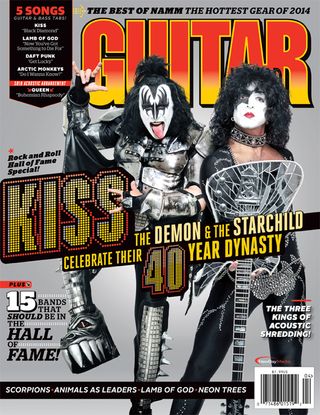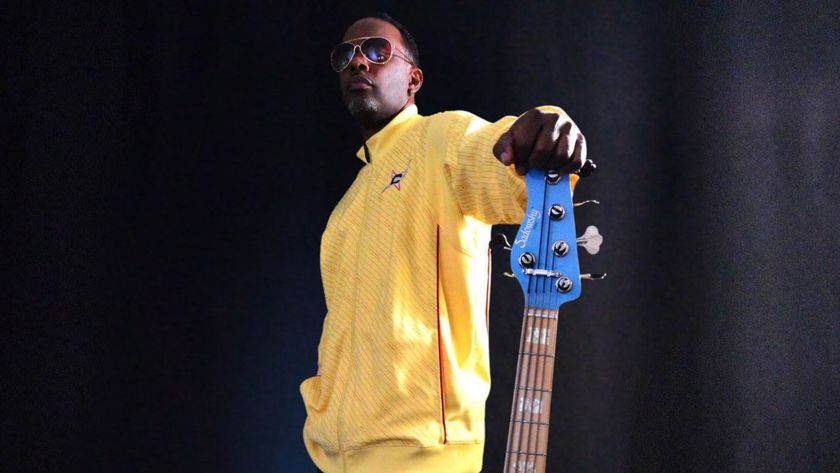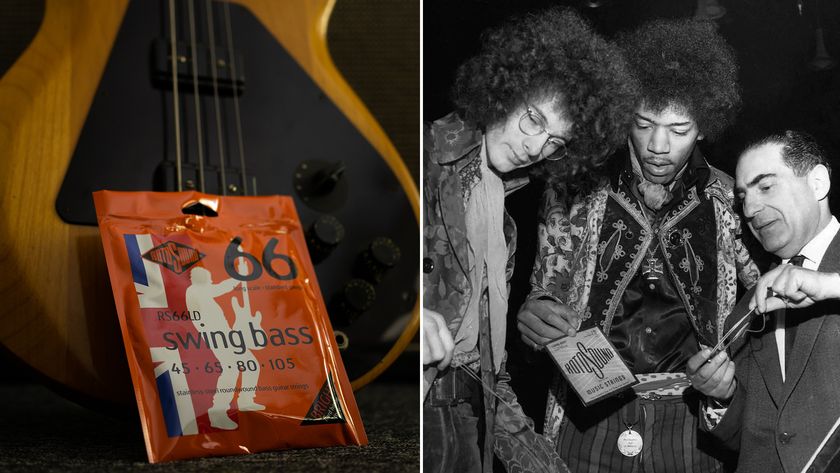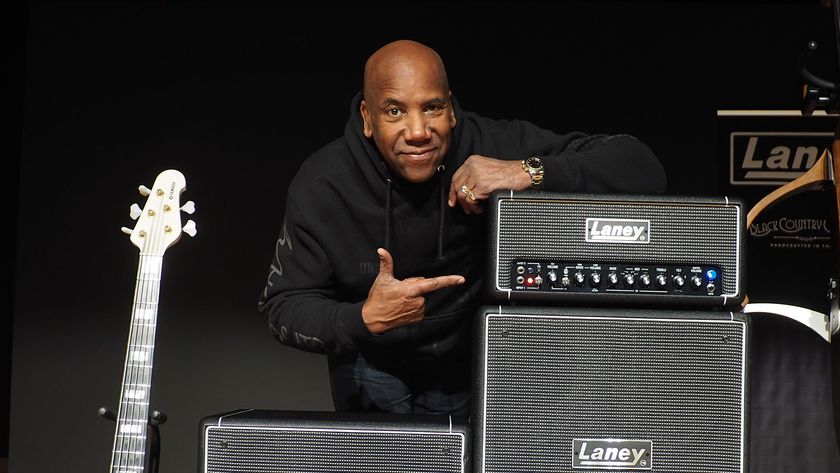acoustic excerpt april 2014

This is an excerpt from the April 2014 issue of Guitar World. For the rest of this story, plus interviews with Paul Stanley and Gene Simmons of Kiss (not to mention the Scorpions, the hottest gear from the 2014 NAMM Show and more), check out the April 2014 issue at the Guitar World Online Store.
Knock on Wood: With a lot of talent and a little bit of luck, a new generation of acoustic guitar fingerstylists are blazing a new style of percussive, alternate-tuned shred.
In the Eighties, radical fingerstylists like Michael Hedges and Preston Reed pioneered an acoustic guitar style based on an alternate-tuned, percussion-heavy, new age–tinged sound. Kaki King explored it further in the new millennium beginning with her 2002 debut, Everybody Loves You.
Some people have dubbed the style “progressive acoustic guitar,” while others prefer “modern fingerstyle.” Jon Gomm, one of its latest (and most popular) exponents, has even heard it referred to as banging, due to its practitioners’ tendency to rap, slap and knock their hands against the body of an acoustic guitar for percussive effect.
Whatever you call it, there’s no doubt that this genre of acoustic guitar–based music is experiencing a major resurgence, thanks to the internet. In 2006, an unassuming-looking acoustic guitar teacher from Topeka, Kansas, named Andy McKee uploaded to YouTube a handful of videos of himself playing some original and incredibly complex instrumental acoustic guitar compositions.
Among the many techniques he employed in these performances was the use of unique alternate tunings, percussive knocks, two-handed tapping, over-the-fretboard playing, partial capos and natural and artificial harmonics. One video in particular, for a propulsive yet ethereal tune called “Drifting,” became one of YouTube’s first viral sensations—likely because it was both melodically appealing and visually stunning—and racked up millions of views on the then-new site.
McKee has since become the figurehead of this style of playing, and scores of exceptionally talented guitarists have followed in his wake. Many of them, such as French-Canadian fingerstylist Antoine Dufour and British picker Mike Dawes, have recorded for the Wisconsin-based independent imprint CandyRat Records, which has become known as the leading purveyor of this music.
Get The Pick Newsletter
All the latest guitar news, interviews, lessons, reviews, deals and more, direct to your inbox!
Like McKee, Dufour and Dawes have found much success online, partly through elaborate solo reimaginings of full-band songs, in which they recreate rhythm, lead and vocal parts on acoustic guitar. (Dawes’ version of Gotye’s “Somebody That I Used to Know” and Dufour’s take on Imogen Heap’s “Hide and Seek” have respectively registered 2.5 and 1.5 million YouTube views.) One of the newest and brightest entries in this realm is Daryl Kellie, who created an online stir with an elegantly arranged version of Queen’s “Bohemian Rhapsody” [see complete transcription on page 120 of the April 2014 issue of GW].
Then there is Britain’s Jon Gomm, who employs a dizzying combination of extended techniques that explore the outermost reaches of the acoustic guitar. Gomm tends to play in a fluid, eight-finger, above-the-fretboard manner, and seemingly manipulates every bit of his instrument, knocking his hand against the guitar’s top, back, sides and the fretboard, scratching his nails across bridge pins, twisting tuning pegs mid-song, and using an assortment of pickups and pedals. Like many of his peers, he has found his greatest success on YouTube, after his signature song, “Passionflower,” went viral in 2012.
That the online world has proved to be a vital forum for these artists is understandable, given that there is an uncharacteristically prominent visual component to what they do. Each musician’s playing style is a marvel of not only creativity and ability but also coordination. “There’s a pretty interesting visual aspect to it, with all the wild techniques,” McKee says, “which is one of the reasons I think YouTube has been such a great arena to showcase the music.”
Guitar World recently caught up individually with McKee, Gomm and Kellie to discuss their unique approaches to the acoustic guitar, as well as how each cultivated his impressive technique and style. Interestingly, they all share not only a love for Michael Hedges and his ilk but also a background in heavy-metal guitar. Says Gomm, “This new acoustic movement is almost like the unplugged version of shred.”
Adds McKee, “I think what ties the two together is the complexity of the music. When all of us guys were first getting into the guitar and wanting to learn these different techniques, metal music was the place to go, because you had guitarists doing unbelievable things on their instruments. In a way, we’ve now transferred some of that over to the acoustic.”
Andy McKee
Perhaps no musician better represents the new progressive acoustic guitar movement than Andy McKee. The 34-year-old is so much the face of the scene that some call this form of music “ ‘Drifting’-style guitar,” a reference to his most famous composition, which has notched almost 50 million YouTube views since its 2006 debut.
At the time, McKee was giving guitar lessons around his hometown of Topeka, Kansas, and recording for CandyRat. “[CandyRat label head] Rob Poland had this idea to shoot some performance videos for this new web site called YouTube,” he recalls. “He thought, Maybe we’ll get a few new fans. So we filmed, like, eight videos in one day and put them up.”
One of them, “Drifting,” went viral after being featured on YouTube’s homepage, and McKee became an online phenomenon. Soon, he was accepting offers to tour with Tommy Emmanuel and record with Josh Groban. “I went from teaching guitar in Kansas to playing guitar all over the planet,” he says. “Which is what I always wanted to do.”
Amazingly, “Drifting” is the first song McKee ever wrote in the style with which he has become so closely associated. He composed it when he was 18, just two years after hearing the percussive-heavy instrumental acoustic guitar work of Preston Reed. “When I was 16, my cousin took me to see Preston at a guitar workshop here in Kansas,” he recalls. “At the time, I was playing electric guitar and was way into Pantera and Dream Theater and Iron Maiden. Then I saw Preston and he was doing all these amazing things with just one acoustic. It blew my mind. I wanted to figure out how he was able to cover melodic, harmonic and rhythmic ideas all at once.”
For the rest of this story, plus interviews with Paul Stanley and Gene Simmons of Kiss (not to mention the Scorpions, the hottest gear from the 2014 NAMM Show and more), check out the April 2014 issue at the Guitar World Online Store.

Rich is the co-author of the best-selling Nöthin' But a Good Time: The Uncensored History of the '80s Hard Rock Explosion. He is also a recording and performing musician, and a former editor of Guitar World magazine and executive editor of Guitar Aficionado magazine. He has authored several additional books, among them Kurt Cobain: Montage of Heck, the companion to the documentary of the same name.

“Freddie King would ask me why I never tried using thumbpicks – I just couldn't play with one”: He took Jimi Hendrix's place in Little Richard's band, was idolized by Stevie Ray Vaughan, and is one of the most overlooked Telecaster slingers of all time

“If any song can unite all generations of rock guitar fans, this is it”: March 2025 Guitar World Editors' Picks










